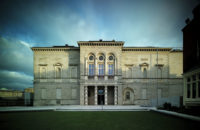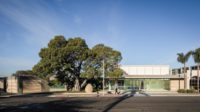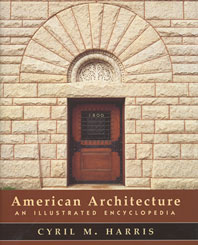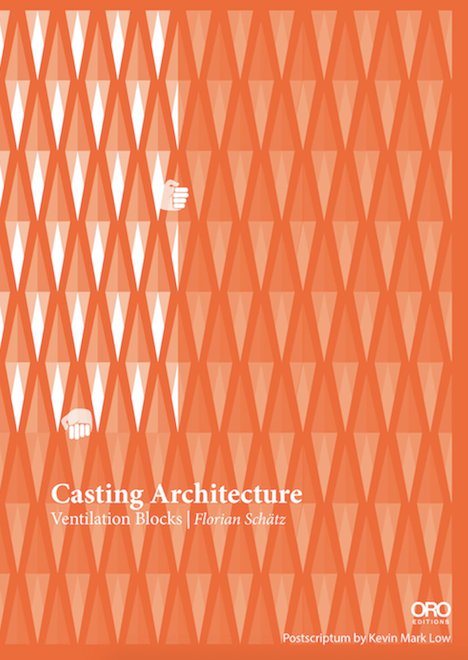North of Jerusalem, reached by roads that are often narrow and winding, the Palestinian Museum first appears as a low-lying beacon set amid the surrounding hills. Composed of two shardlike limestone volumes joined above a low, triangular expanse of glass, the building crests a cascade of landscaped terraces. With its crisp geometries and its integration with the undulating topography, it is the striking response of Dublin-based Heneghan Peng Architects to the client’s desire for a sustainable, contemporary structure that nods to the area’s vernacular architecture while emphasizing a deep connection to the landscape.
Additional Information:Jump to credits & specifications
The $17.5 million museum is the flagship project of Taawon, a nonprofit that provides development and humanitarian aid to Palestinians. Originally, it was intended as a space of memory, focusing on the Nakba, the displacement of Palestinians resulting from the 1948 Israeli-Arab war. Later, the founders decided that instead of being limited to a single event, it should connect Palestinians around the world to their shared culture and history. The museum will showcase contemporary art, historical images, and traditional crafts, with a focus on their contribution to contemporary Palestinian culture. (Though the building opened last May, it will not mount its inaugural show until the fall.) Says museum director Dr. Mahmoud Hawari, “We would like to speak to the youth of Palestine with a view for a better future.” Birzeit University, near the West Bank city of Ramallah, donated 10 acres of its land for the project. Heneghan Peng’s design was chosen from more than 40 submissions in an invited international competition in 2011. Firm cofounder Róisín Heneghan had never visited the area before the competition. Her first encounter left her with strong impressions of the site. “I became much more aware of the importance of the plant life and its textures and smells,” she says, “and its power to evoke memories.”
It was clear, then, that a network of gardens would become a focal point of the design. “Rather than thinking of the museum as a building surrounded by landscape, we considered the entire site to be the museum, with some space inside and some outside,” says Heneghan. The architects’ master plan includes the 38,000-square-foot building and about nine acres of gardens, as well as a forthcoming second phase that will include an additional 67,000 square feet for galleries and a lecture theater. Beds of fragrant herbs like lavender and sage are among the plantings in a series of zigzagging gardens designed by Lara Zureikat, a Jordanian landscape architect. These variegated plots skirt the building, its outdoor amphitheater, and its triangular terrace, linking indoor and outdoor spaces. The gardens themselves, equipped with power, data, and wi-fi coverage, can serve as exhibition space.
Heneghan Peng also drew on the area’s traditional architecture for their design, specifying small windows to counter the intense sunlight and employing stone construction. Cladding the roof in the same limestone as the exterior walls creates visual unity—though the choice of heavy material here, says Heneghan, proved to be demanding for the construction. The firm took inspiration as well from the topography: the crystalline geometries were informed by the contours of the site. Because of the building’s significance, the architects proposed placing it at the top of the site so that its folded roof would create a distinct profile—a “crown” for the hill.
Built into the slope, the museum is entered at the upper floor. The central lobby, suffused with daylight, houses a café and opens to the terrace. The northern half of this level is devoted to offices, while the southern half holds the principal gallery and an adjacent narrow exhibition space. Classrooms on the lower floor open to the amphitheater. Inside, the building is an exercise in lightness and strength. The sandyhued stone floors provide a sense of solidity and keep the spaces cool, while concrete walls provide thermal mass, also helping to modulate interior temperatures. Dramatic ceiling lines echo the concrete roof’s folded geometries and soar to 16 feet in the main gallery, making it feel larger than its 5,000 square feet.
To additionally counter the area’s hot, dry summers, the architects insulated the building and selected the pale limestone in part for its reflective properties. Despite minimizing window size to limit solar heat gain, the team did make concessions, says Heneghan. “We wanted to take advantage of that amazing view to the west—the rolling hills falling away to the coastal plain.” So the café and the narrow gallery have insulated, reflective glass walls, which are shaded by dramatic exterior aluminum fins. While the main gallery employs standard air-conditioning, the offices are naturally ventilated and largely daylit. (All electric illumination is LED.) Further responding to the client’s demands for sustainable construction, the team installed solar panels for hot water as well as specified gray- and black-water treatment and a rainwater-collection system for irrigation. The museum—in addition to being the first Palestinian-funded building of its kind—is to be the first LEED Silver–certified building in the West Bank and Gaza. “Palestine wants to be part of the international community at all levels and to educate our youth on issues of global environment and preservation of natural resources,” Hawari, the museum director, says.
Paradoxically, the museum that aims to be a worldwide cultural hub is physically accessible almost exclusively to Palestinians living in Jerusalem and the West Bank, in part because of travel restrictions related to the Palestinian–Israeli conflict. To overcome this, next month the museum will launch an online platform spanning Palestinian history, but with a focus on the modern era. Simultaneously, it will begin work on an open-access digital archive of documents, photographs, and films. And, in its first phase, the museum is creating partnerships with existing institutions in cities with large concentrations of Palestinians. Its first exhibition—opening this September—will focus on Palestinian representations of Jerusalem. It will include commissions and programs with artists and collectives, both within the museum and at other locations, particularly in Jerusalem.
For now, when Palestinian schoolchildren arrive on organized visits, they participate in art programs and are taught about the building’s sustainable strategies as well as preservation of the environment. Conceived and built in troubled times in the region, the museum is, in Hawari’s words, “a statement of optimism."
CreditsArchitect: Heneghan Peng Architects
Local Partner: Arabtech Jardaneh
Landscape Architect: Lara Zureikat
Engineers: ARUP (civil/structural/building services/fire)
Project Manager: Projacs International
Client: Taawon
Size: 38,000 square feet (building);
Cost: $17.5 million
Completion date: May 2016 |
SpecificationsDolomitic Limestone Nassar Stone Curtain Wall & Brise Soleil Schüco, ALICO Lighting ERCO Carpet Tretford |














